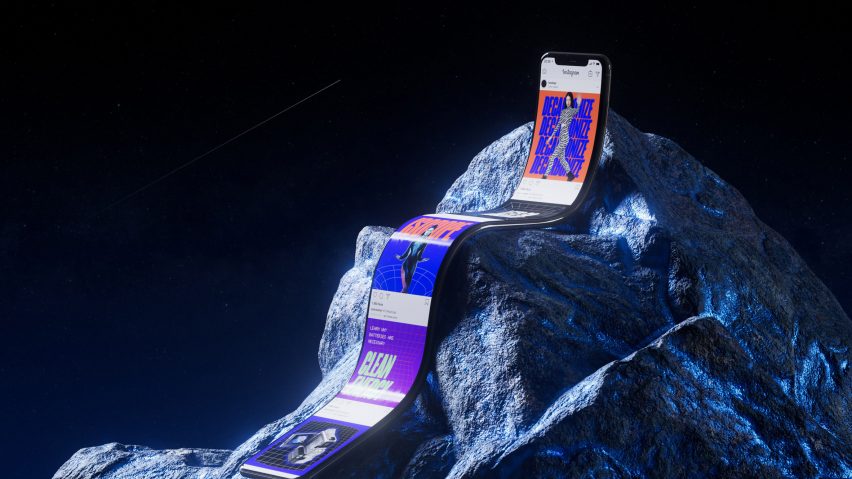
&Walsh uses AI to create branding for nuclear energy advocate
American creative agency &Walsh has created the branding for the website of nuclear energy advocate Isodope using AI image generator DALL-E 2.
Before creating the branding, New York-based &Walsh had been experimenting with OpenAI's DALL-E 2 platform to see if it could be useful for coming up with brand imagery.
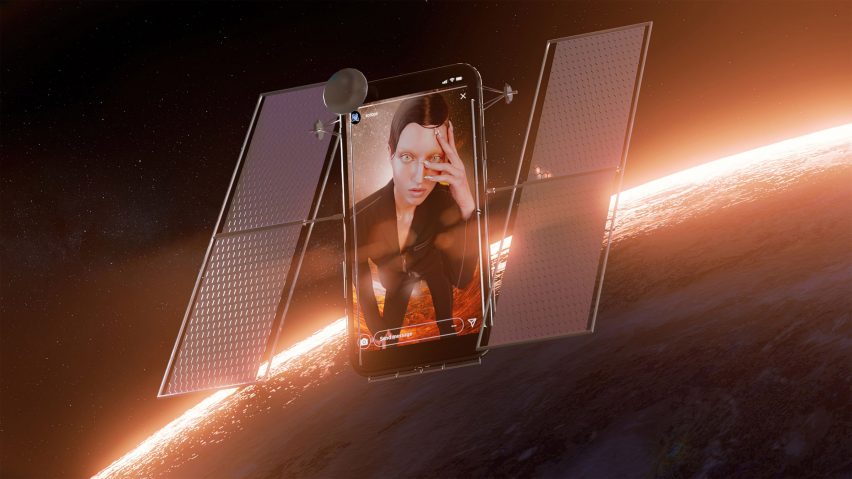
"We used AI to generate many of the case study images, iconography, art direction and backgrounds for Isodope's imagery," &Walsh co-founder Jessica Walsh told Dezeen.
DALL-E 2 is a platform that uses text-to-image artificial intelligence (AI). Users input a series of words and the AI then taps a large image database to create one-of-a-kind images made from composites based on the original inputs.
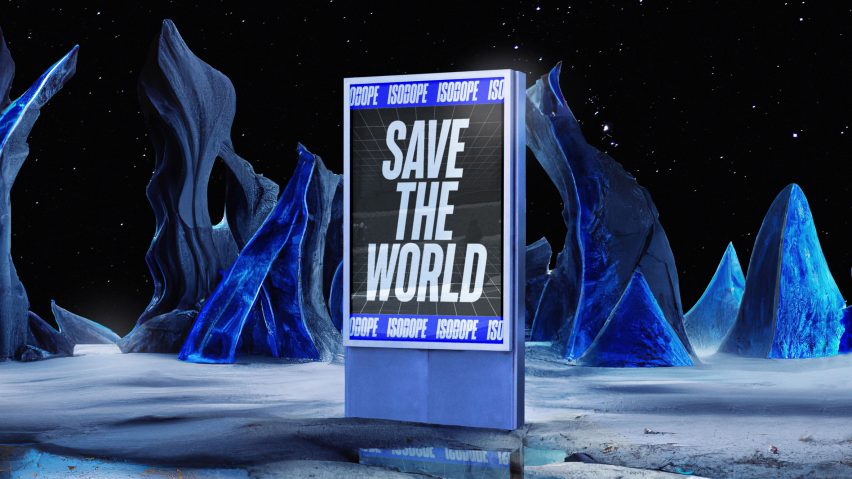
&Walsh believes its efforts mark one of the first times that the technology has been used for branding.
"I've seen it used for art and illustrations and photography, but not to create a branding project," said Walsh.
"We've experimented with it before but this is the first time we've used it in a larger way to help shape and generate an entire brand," she added.
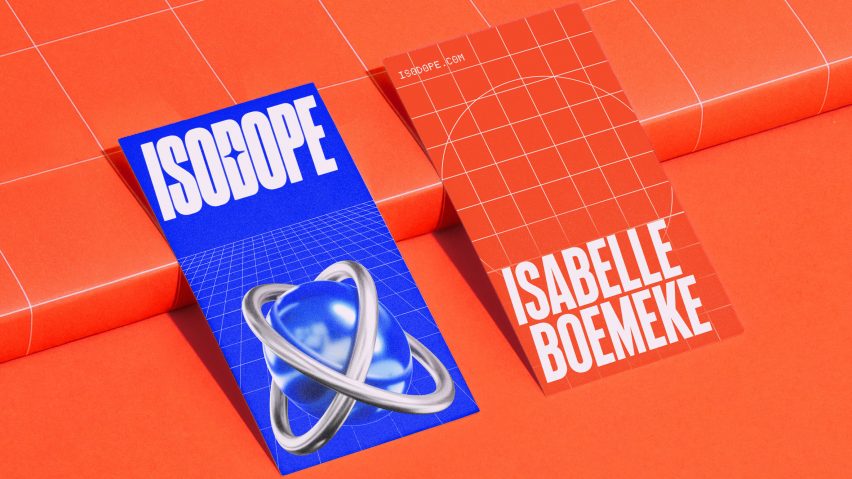
Walsh said that Isodope – a brand founded by Isabelle Boemeke that uses TikTok to promote nuclear energy – was an ideal project to test out the methods.
"It felt right to do our first AI branding with a project aimed towards protecting the future of humanity," said Walsh.
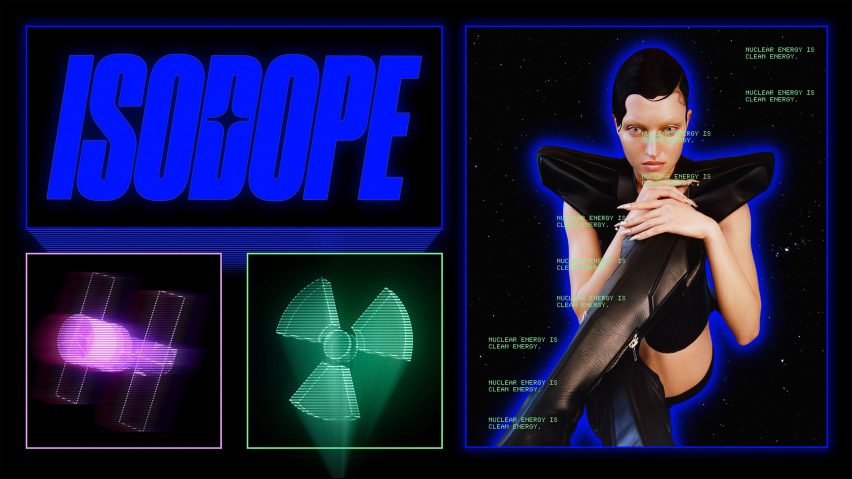
The studio used prompts such as "3d model of vintage computer made of blue-black rock texture in an otherworldly environment with blue sand and chrome balls and blue meteor rocks with colorful art direction" and "an image of a nuclear power symbol with a smiley face in the center" to generate imagery for Isodope.
This method generated imagery that takes the company's themes and mixes them with the intention of the designers, creating a specific and digitally oriented body of content.
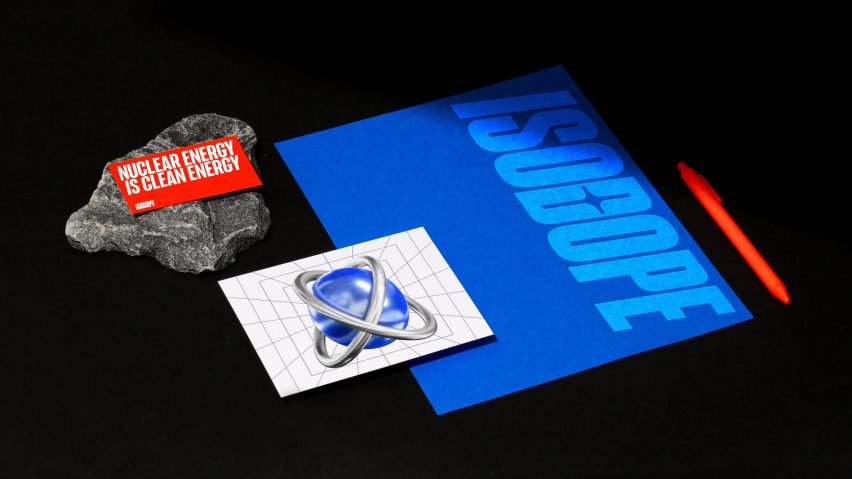
Walsh said that thousands of images were generated, leading to the project becoming one of both experimentation and curation.
"AI is a tool like any other design tool," she said. "You can't just use it for an hour and expect it to make something great. You have to learn its language and how to manipulate words and prompts to get what you are thinking in your mind."
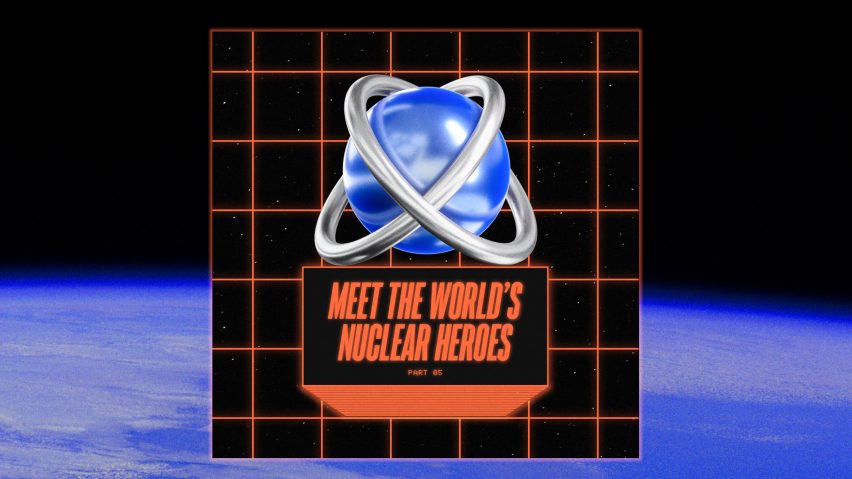
Walsh believes that AI image generators offer a way for clients to have specific ideas about projects early on, and that AI generation will eliminate tedious brain-storming and drafting tasks for team members.
"There will always be the need for humans to shape the final results and there will be an entire industry of jobs of people who are experts at speaking to and working with AI," said Walsh, who likened the use of AI generation to early digital fabrication technologies.
"Take for example computer and design software when it first came out," she said.
"Designers feared it would take their jobs but really it just eliminated a lot of the tedious work and expensive barriers in becoming a designer," she added.
"It allowed a new generation of creatives to become designers who couldn't have dreamed to in the past due to where they lived, the price of tools, or access to training required to master craft."
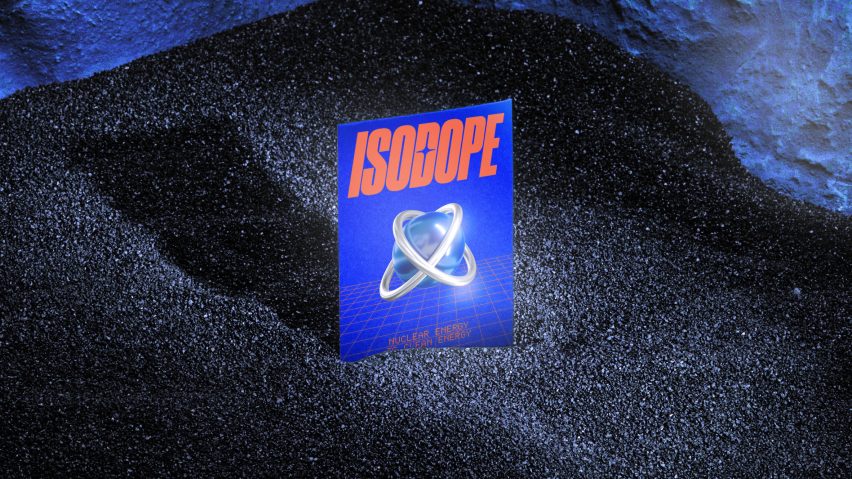
The Isodope website featuring &Walsh's branding efforts has a planned launch date of late October. Besides the website, the branding will also be used for physical materials such as "holographic stickers," according to Walsh.
In April, Dezeen rounded up other designs being generated by OpenAI's text-to-image technology.
The images are courtesy of &Walsh.